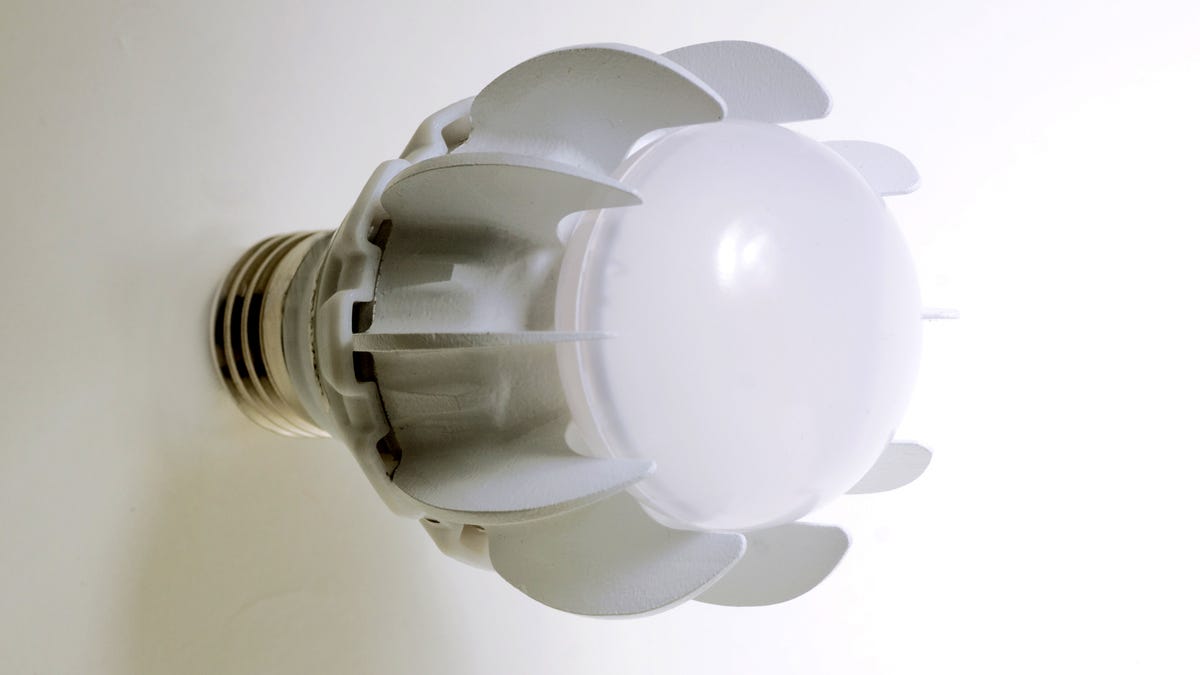LED lights seek to uncrown 100-watt bulb
GE's 100-watt equivalent LED bulb uses a high-tech cooling system to push the limit of brightness for energy-efficient, long-lasting LEDs.

General Electric today introduced a 100-watt equivalent LED bulb which is the clearest example yet of how high-tech lighting has become.
The company's Energy Smart LED bulb consumes 27 watts to give off the same amount of light as a 100-watt incandescent lamp. It will be released in the first half of next year. The price has not yet been set.
GE's announcement, made at the Light Fair industry conference in Las Vegas, shows how lighting manufacturers have finally cracked one of the toughest challenges in LED lighting -- making lamps able to give off a lot of light in all directions. Philips today also introduced its 100-watt equivalent, as did Sylvania; both products are extensions of existing product lines and are due this summer.
One of the primary barriers to LED lamps breaking past 1,500-lumen brightness is heat. The waste heat produced by LED lamps can degrade the long life they promise, which is why most LED lamps rely on a heat sink for cooling.
For GE's 100-watt equivalent, the company uses an active "synthetic jet" cooling technology from Nuventix that creates a steady air flow inside the lamp. Within the bulb is a small chamber where a diaphragm oscillates and stirs up air currents. As that turbulent air exits the chamber, it pulls hot air from the LED light sources and creates a cooling air current.
"We now have a clear path to attaining even higher light levels, which will give customers more energy-efficient lighting options in both commercial and residential settings," said Steve Briggs, general manager of LED Systems at GE Lighting.
The bulb will give off 1,600 lumens, has even light distribution, and a color temperature of 3000 Kelvin, which is white light. It's rated for almost 23 years at 3 hours per day and is dimmable.
Having bright, omnidirectional bulbs marks another achievement for LED technology which has progressed over the past two years to the point where LED bulbs now compete with other technologies, including halogens and compact florescent lights, for general lighting, rather than niche uses like spotlights or flashlights.
Price, though, remains a challenge for broader consumer acceptance, even though LEDs pay for themselves in energy savings over their lifetime. Depending on the brightness, general-purpose LED lamps range from under $20 to $50 for Philip's high-end LPrize LED. GE's 9-watt LED bulb, designed to replace a 40-watt incandescent, is priced at about $50 but is available for $36 on Amazon.
The push for more efficient bulbs in the U.S. stems from a 2007 law requiring higher efficiency starting in the 100-watt incandenscent bulb category.

